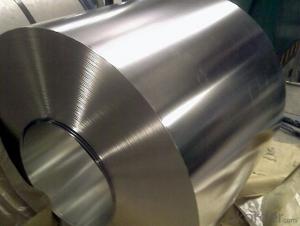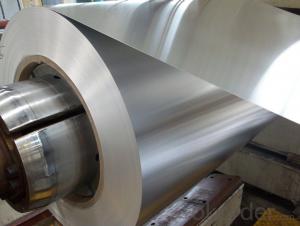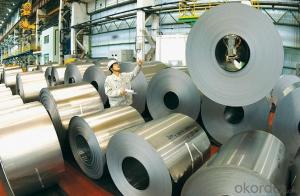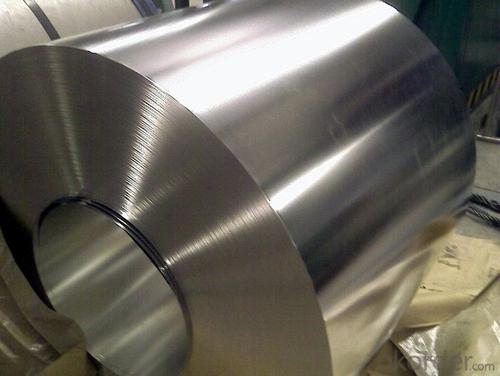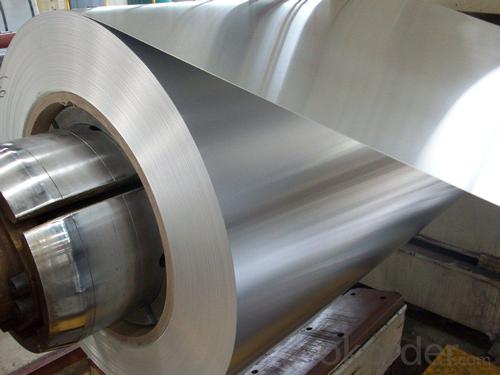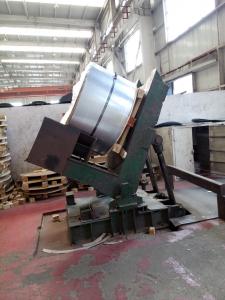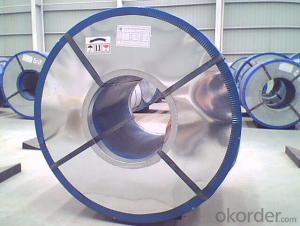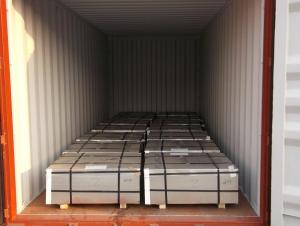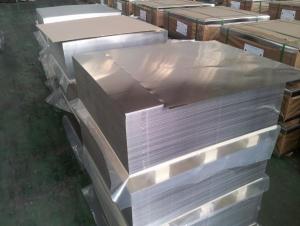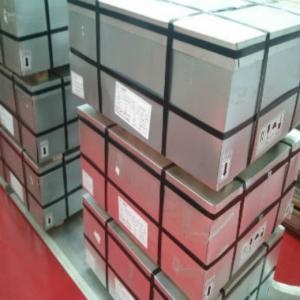Electrolytic Tinplates in Coils for Cans Packing in good price
- Loading Port:
- Tianjin
- Payment Terms:
- TT OR LC
- Min Order Qty:
- 25 m.t
- Supply Capability:
- 7000 m.t/month
OKorder Service Pledge
OKorder Financial Service
You Might Also Like
1.Structure of Electrolytic Tin Plate Coils and Sheets for Foods Metal Packaging Description
Electrolytic Tin Plate Coils and Sheets for Foods Metal Packaging, is one thin steel sheet with a coating of tin applied by electrolytic deposition. Tinplate made by this process is essentially a sandwich in which the central core is strip steel. This core is cleaned in a pickling solution and then fed through tanks containing electrolyte, where tin is deposited on both sides. As the strip passes between high-frequency electric induction coils, it is heated so that the tin coating melts and flows to form a lustrous coat.
2.Main Features of the Electrolytic Tin Plate Coils and Sheets for Foods Metal Packaging
Appearance – Electrolytic Tin Plate is characterized by its beautiful metallic luster. Products with various kinds of surface roughness are produced by selecting the surface finish of the substrate steel sheet.
Paintability and printability – Electrolytic Tin Plates have excellent paintability and printability. Printing is beautifully finished using various lacquers and inks.
Formability and strength – Electrolytic Tin Plates have got very good formability and strength. By selecting a proper temper grade, appropriate formability is obtained for different applications as well as the required strength after forming.
Corrosion resistance – Tinplate has got good corrosion resistance. By selecting a proper coating weight, appropriate corrosion resistance is obtained against container contents. Coated items should meet 24 hour 5 % salt spray requirement.
Solderability and weldability – Electrolytic Tin Plates can be joined both by soldering or welding. These properties of tinplate are used for making various types of cans.
Hygienic – Tin coating provides good and non toxic barrier properties to protect food products from impurities, bacteria, moisture, light and odours.
Safe – Tinplate being low weight and high strength makes food cans easy to ship and transport.
Eco friendly – Tinplate offers 100 % recyclability.
Tin is not good for low temperature applications since it changes structure and loses adhesion when exposed to temperatures below – 40 deg C.
3.Electrolytic Tin Plate Coils and Sheets for Foods Metal Packaging Images
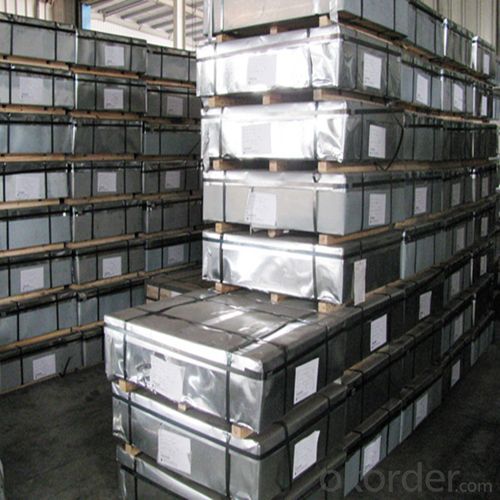
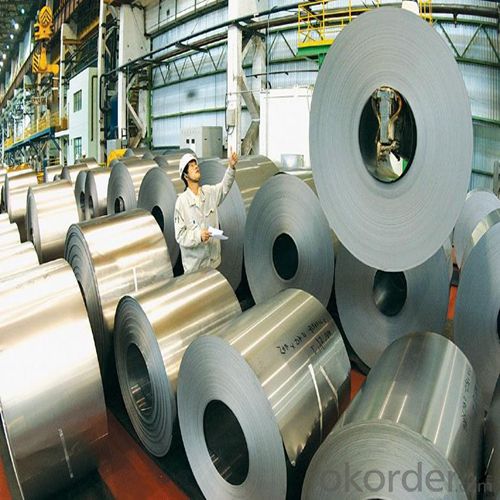
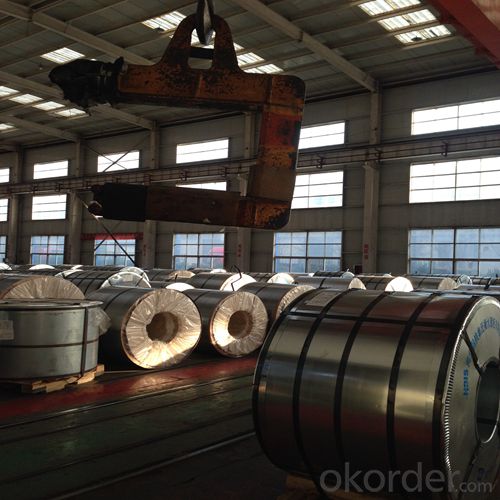
4.Electrolytic Tin Plate Coils and Sheets for Foods Metal Packaging Specification
Standard | ISO 11949 -1995, GB/T2520-2000,JIS G3303,ASTM A623, BS EN 10202
|
Material | MR,SPCC |
Thickness | 0.15mm - 0.50mm |
Width | 600mm -1150mm |
Temper | T1-T5 |
Annealing | BA & CA |
Coil Inner Diameter | 508mm |
Weight | 6-10 tons/coil 1~1.7 tons/sheets bundle |
Passivation | 311 |
Oil | DOS |
Surface | Finish,bright,stone,matte,silver |
5.FAQ of Electrolytic Tin Plate Coils and Sheets for Foods Metal Packaging
-What your tinplate material is used for ?
Tinplate is widely used for the packaging of products. Such as food cans,
beverage cans, pet cans, closures, general line cans and so on.
Printed Tinplate is offered!!
-How to place .an order or contact you ?
Please send us Email. we will give you a quick response in seconds .
- How is your quality ?
All our quality is prime even the secondary quality . We have many years experience
In this field with serious quality control standard . Advanced equipment, We welcome your visit to our factory .
- Q: How is tinplate affected by different types of dairy products?
- Tinplate is not significantly affected by different types of dairy products. It is a commonly used material for packaging dairy products due to its excellent corrosion resistance and ability to maintain product quality and freshness.
- Q: What are the different ways to recycle tinplate containers?
- There are several different ways to recycle tinplate containers. One common method is to bring them to a local recycling center where they can be sorted and processed for recycling. These containers are typically made of steel or aluminum, which can be melted down and used to create new products. Another option is to reuse tinplate containers for storage or other purposes before eventually recycling them. Additionally, some communities offer curbside recycling programs where tinplate containers can be collected alongside other recyclable materials.
- Q: What are the advancements in tinplate technology?
- Some of the advancements in tinplate technology include improved coatings for enhanced corrosion resistance, the development of thinner and lighter tinplate materials, and the introduction of advanced printing techniques for more vibrant and detailed designs. Additionally, there have been advancements in tinplate manufacturing processes, such as continuous annealing and tin-free steel alternatives, which have improved production efficiency and reduced environmental impact.
- Q: What are the main applications of tinplate in the music industry?
- Tinplate is primarily used in the music industry for the production of cans for storing and preserving musical instruments, such as drums and cymbals. It provides a durable, corrosion-resistant and lightweight solution for packaging and transporting these instruments, ensuring their protection and longevity. Additionally, tinplate is also used for manufacturing components of musical instruments, such as reeds for woodwind instruments or small parts for stringed instruments, due to its malleability and ability to create intricate shapes.
- Q: What are the potential health risks associated with tinplate packaging?
- Potential health risks associated with tinplate packaging include the possibility of contamination from lead, which can be harmful if ingested, as well as the risk of bisphenol A (BPA) leaching into food or beverages, potentially disrupting hormone function. Additionally, there is a concern that the coating inside tinplate cans may contain harmful chemicals that could migrate into the contents.
- Q: How is tinplate affected by different types of beverages?
- Tinplate is generally resistant to most types of beverages, including acidic ones. However, certain highly acidic or corrosive beverages, such as fruit juices, can cause a chemical reaction with the tin coating, potentially leading to a metallic taste or discoloration. To prevent this, tinplate cans are often lined with a protective coating, such as lacquer or polymer, to ensure the beverage's quality and safety.
- Q: What are the common closure options for tinplate containers?
- The common closure options for tinplate containers include twist-off caps, screw caps, snap-on lids, and pressure-sealed lids.
- Q: Can tinplate be used for packaging pet care products?
- Yes, tinplate can be used for packaging pet care products. Tinplate is a durable and food-safe material that can effectively protect and preserve various products, including pet care items, such as pet food, treats, and grooming products. Additionally, tinplate packaging offers excellent resistance to corrosion and can be easily shaped and decorated to enhance product appeal.
- Q: What are the advantages of using tinplate packaging?
- There are several advantages of using tinplate packaging. Firstly, tinplate is highly durable and provides excellent protection to the packaged goods, ensuring their safety during transportation and storage. Secondly, tinplate has a high resistance to corrosion, which helps to maintain the quality and freshness of the products for a longer period of time. Additionally, tinplate packaging is lightweight, which reduces transportation costs and makes it easier for consumers to handle. Moreover, tinplate is a sustainable and recyclable material, making it an environmentally friendly choice. Lastly, tinplate packaging is versatile and can be easily shaped, printed, and decorated, allowing for attractive and eye-catching designs, enhancing product visibility and brand appeal.
- Q: What are the benefits of using tinplate for roofing?
- Tinplate offers several benefits for roofing, including its durability, resistance to corrosion, lightweight nature, and ease of installation. It provides excellent protection against harsh weather conditions and can withstand extreme temperatures. Additionally, tinplate roofs have a long lifespan, require minimal maintenance, and are environmentally friendly as they can be recycled.
Send your message to us
Electrolytic Tinplates in Coils for Cans Packing in good price
- Loading Port:
- Tianjin
- Payment Terms:
- TT OR LC
- Min Order Qty:
- 25 m.t
- Supply Capability:
- 7000 m.t/month
OKorder Service Pledge
OKorder Financial Service
Similar products
Hot products
Hot Searches
Related keywords
